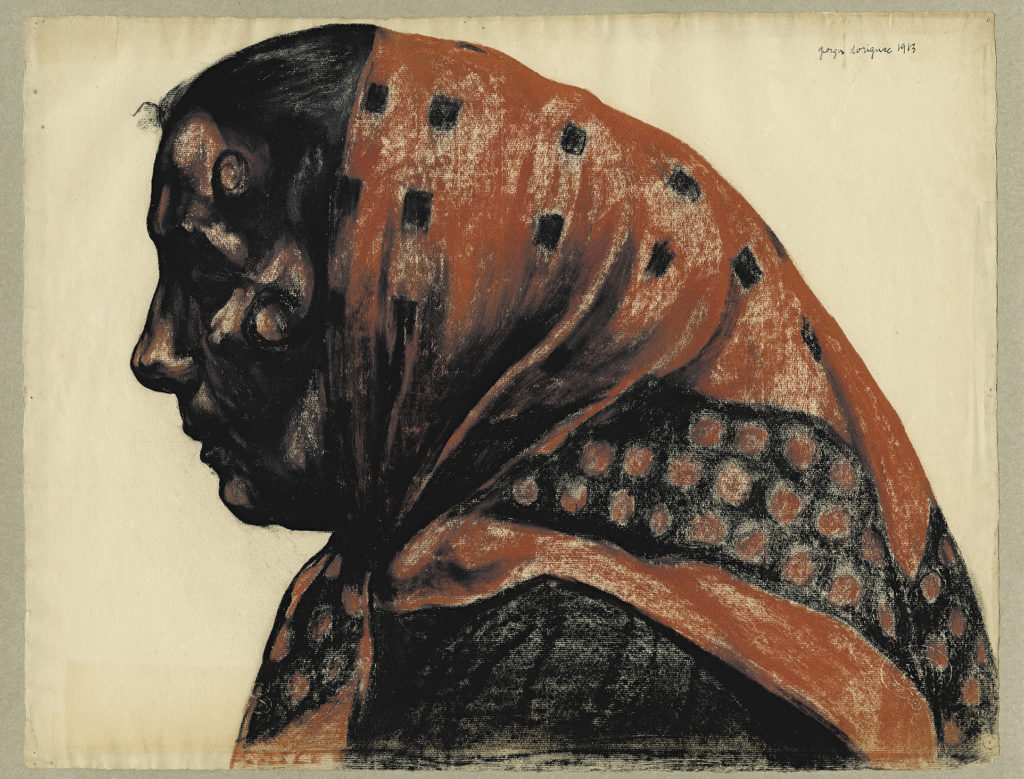An impressive red and black chalk figure of the newly reappraised Georges Dorignac. This monumental drawing is one of the key figure of Dorignac’s work from 1911-1914. The gypsy-like aspect of this head may have been inspired by the Spanish painters and friends of Dorignac at La Ruche, a city of artists in Paris, where Dorignac’s studio used to be. It belongs to a group of at most five drawings representing a gypsy, all in private collections. In this series, the bust of the young woman is studied by Dorignac alternatively frontal, sided view or bowed head, her headscarf on her shoulder or tied on the back or in the front. Even if this drawing is monumental, invading all the surface of the sheet from the low right corner to the extreme top, the present one has the most tender character. The profile outlined in dark chalk and facing to the left seems to be immersed in her inner sights. The curves of her hair repeat the ray of light that build the volume of her front, nose and check. The naturalistic life of the face emerged from a massive headscarf the pattern of squares and lines of which is, like her outfit, an abstract counterpoint. This unusual composition is one of the greatest examples of Dorignac’s geometrical approach to volume.
The artist was biased in favour of innovative techniques, using red and white chalk, charcoal, ink with areas left in reserve. Each time, he reinvented his technical approach with mastery to create a unique and distinctive volume of the figure. The theme of the gypsy, or even possibly a peasant, is representative of the attraction of Dorignac for the ‘world of labour’. The Belgian sculptor Constantin Meunier (1831-1905) who he admired had also given a major place to this new type of artistic representation. But in Dorignac’s drawings, the workers are bending down, pushing or pulling; he liked the forms induced by the movement, always contained within a black line. The same model and the same headscarf are echoed in two other monochrome drawings: Paysanne au repos ou Fin de journée (Musée des Beaux-Arts, Bordeaux) and Au pays noir, Au pays minier, (Centre Pompidou-Musée National d’art Moderne, Paris). In the latter sheet the presence of the body is massive but tightly framed to the limit of the sheet of paper.






